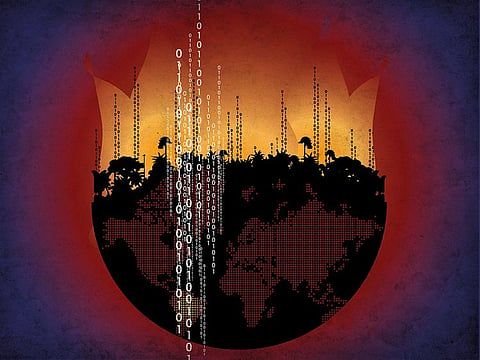Amazon fires is a global crisis
Brazil’s past can show the path forward to save our planet’s most vital assets

Just over 16 years ago, on a sweltering day along the southeastern fringe of the Amazon forest, we sat down to catch our breath on a half-burnt log. Plumes of smoke on the horizon wafted to the sky, and the sound of chainsaws whirred in the distance. We couldn’t have known that we were sitting in a time and place that was rapidly approaching peak deforestation this century in the Amazon. It was July 2003 in the Brazilian state of Mato Grosso.
That moment comes to mind this week, with reports that Brazil’s Amazon has experienced a record number of fires this year — the result of both drier conditions and intentional burning to clear the forest. As smoke from deforestation fires blankets the Amazon once more, those in power have responded by attacking government scientists and attempting to bury facts that the satellite record makes clear. But lessons from Brazil’s own past highlight the importance of these data — and could show the path forward.
In 2003, we were on a mission with our colleagues from the Brazilian space agency, INPE, as part of a collaboration between US and Brazilian scientists. The goal was to understand how the Amazon forest stores massive amounts of carbon that would otherwise trap heat in the atmosphere and how trees recycle water into clouds that sustain forests and water crops far away.
Also Read: Why it is urgent to save the Amazon forest
Before we headed into the field, we had huddled with our Brazilian colleagues around computers to analyse data from a recently launched satellite that sent images of the forest every day. The new data were full of promise, suggesting it might be possible to shrink the time between a chainsaw crew cutting a forest tract and INPE’s ability to map where that deforestation occurred. With older satellites, the gap between the event and the information could be weeks or months.
After crossing rivers on shaky wooden bridges, changing numerous flat tires and pushing vehicles out of the sand, we arrived at one of the spots marked on the map. Sure enough, a thick chain dragged between two tractors had ripped out the trees by their roots. At a second spot, piles of dead trees still smouldered. A third spot also had telltale signs of recent deforestation. And a fourth, fifth and sixth. Each clearing was as big as an Iowa cornfield. The algorithm was spot on.
Rampant deforestation
As we sat on the log, we looked at each other in dismay. We were thrilled with the accuracy of the algorithm, but distraught at what it meant. Pasture for cattle and fields for soy to ship to Europe and Asia were replacing towering trees. Satellite images provided the big picture. The Amazon forest was disappearing before our eyes.
Our Brazilian colleagues put their technical skill and dedication to their mandate into action. For decades, the Brazilian government has had the best system in the world to track its forests. INPE’s estimates are the gold standard to officially document changes in the forest. The key has been transparency: Satellite images, methods and results are all shared with the world. And their work made a difference. Data alone cannot keep the forest standing, but without data, even the best policies cannot go into action.
In the following years, deforestation rates plunged with government policies that combined carrots and sticks for ranchers and farmers. The tired rationale that standing forests get in the way of progress toppled. With better-managed pastures and fields, ranchers and farmers produced even more beef and soy despite restrictions on new clearings. Brazil became the shining example for other countries blessed with vast remaining tracts of lush tropical forest. Tracking deforestation from satellites became nearly as routine as an annual check-up.
With the seemingly pervasive shift in political winds, the shining model of Brazil’s success is losing its sheen. Deforestation is inching upward, an observable fact known from INPE’s own system and other sources. Brazilian President Jair Bolsonaro — who has made opposition to environmental policies a pillar of his platform — doesn’t like these facts. Because the reality gets in the way of unearthing valuable minerals, he is using the all-too-familiar tactic of claiming truth is a lie and cutting off the fact-checkers. Yet this comes at great cost.
In the years since we sat on the log at the edge of the deforestation frontier, Brazil demonstrated to the world that effective policies can curb the damage. But our planet’s most vital assets can never be completely safe from political upheavals that reverse course on earlier gains. Successes take years of hard work and technical expertise from many talented people, such as our INPE colleagues. As the chainsaws buzz once again, we stand in solidarity with the truth — the satellite record of forest loss for the world to see.
— Washington Post
Ruth DeFries is the professor of sustainable development at Columbia University and Doug Morton is chief of the Biospheric Sciences Laboratory at Nasa’s Goddard Space Flight Center.
Sign up for the Daily Briefing
Get the latest news and updates straight to your inbox


